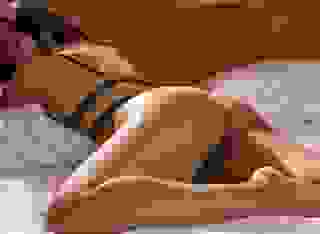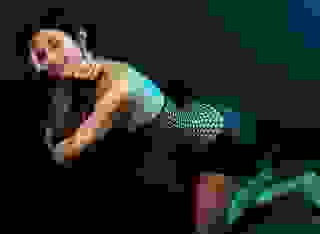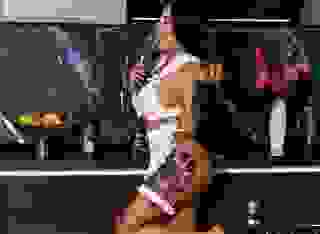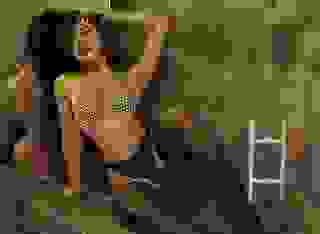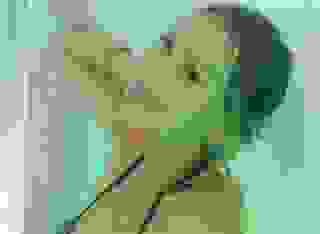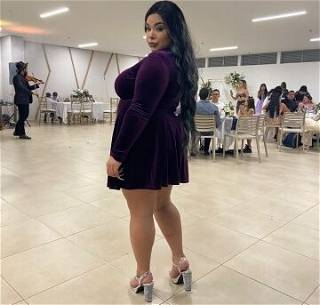Note: You can change font size, font face, and turn on dark mode by clicking the "A" icon tab in the Story Info Box.
You can temporarily switch back to a Classic Literotica® experience during our ongoing public Beta testing. Please consider leaving feedback on issues you experience or suggest improvements.
Click hereThe audience laughed and some applauded.
"Okay, then," Sheila said. "What can you tell us about Shane?"
"Um. Here we go. It was filmed in 1951 but not released until 1953, because the director, George Stevens, took so long to edit it; he wanted to do a really good job. And Stevens was also the movie's producer as well, so he didn't have some studio boss breathing down his neck. The studio was Paramount, and when it was being made the studio thought it was just another 'B' movie, nothing special. But it cost three million dollars, which was a lot of money back then, and a lot of the reason was because of all the special things George Stevens made them do, which I'll get to in a minute. But anyway, the studio was getting worried about the costs, and they even thought about selling it to Howard Hughes just to get rid of it. And Hughes was really, really interested in it because he'd seen a rough cut. But because Hughes was so suddenly interested Paramount reconsidered and thought, hmm, if Hughes likes it so much maybe we better keep it after all, and so they did."
"One of the major reasons Paramount didn't have great expectations for it was the casting. Originally Stevens wanted Montgomery Clift to play the role of Shane, and Clift was really, really hot. He'd just done Red River two years earlier. Stevens also wanted William Holden to play the part of Joe Starrett, and he wanted Katherine Hepburn to play Marian, Joe Starrett's wife."
"Oh, wow," Sheila Murray said.
"Yeah, I know. So anyway, they checked and neither Montgomery Clift nor William Holden were available, and Hepburn was iffy or not available, and so the film almost died right there. But Stevens loved the book and the script and he had great faith in it, so he went back to the studio and he asks, okay, who else is available? And they go over this list of contract players who were available, and Stevens reads the list and he goes, okay, him and him and her and him and her. He picked Alan Ladd and Van Heflin and Jean Arthur, and a couple other supporting people; he casts all the major leads in, like, fifteen minutes, off of a menu. I mean, it was amazing."
"That's incredible," Sheila said.
"I know. Today it takes a team of lawyers six months to put a cast together. And even more incredible is that Jean Arthur was 50 years old and Alan Ladd was only 38, and Van Heflin was 41. Jean had a long and very good film career, but she was known mostly for comedies and light roles. She started out in silent movies, and she had this funny, high, squeaky voice, which didn't matter in silent films but once talkies came around her voice kinda determined that she'd do comedy stuff, not serious parts. So picking a 50-year-old comedian with a squeaky voice to be the serious love interest of a 38-year-old gunslinger was either pretty weird, or pretty risky, or maybe sheer genius, or maybe all of them. But anyway, that's what Stevens did.
"The plot takes place in Wyoming, and is loosely based on the Johnson County War, which took place in 1892, so if you wonder about what year this is supposed to be, think somewhere in the range of 1888 to 1892. The Johnson County War was between a lot of small homesteaders versus a handful of big ranchers. The winter of 1887-88 was really bad, which caused a drought and a lack of grazing land. The big ranchers were headquartered in Cheyenne, and many were members of the Cheyenne Social Club, which, yes, was not only the name of a movie but really existed. Anyway, the big ranchers needed more land and water, and they started taking it away from the small homesteaders. Eventually the ranchers hired a bunch of gunslingers and killers from Texas to come in and run off the small farmers and homesteaders, and finally there was a big gun battle, which was the Johnson County War itself.
"I want to talk about Michael Cimino's epic movie Heaven's Gate for a minute.. That was all about the Johnson County War. So that's what's going on here: One of the major ranchers brings in a hired gunfighter to chase off some essentially peaceable and peace-loving small-time homesteaders. When it came out in 1980, the year I was born, critics panned Heaven's Gate, and it's notorious for being considered a disaster movie that killed its studio, United Artists. But there's a small handful of people who think Heaven's Gate has within it a potentially great movie dying to get out. And what you may not know is that right now, as this festival is going on, there's a director named Steven Soderbergh out there who is re-cutting Heaven's Gate into a much shorter version. I haven't seen it, but the shop talk I hear around town is that this version isn't going to be any better and might even be worse than the original. We'll just have to see. Now, if I had my druthers, what I would really like to see is Cimino do a major new director's cut, incorporating what he's learned from all the criticism and from his experience afterward. It's my hunch that a new Cimino director's cut might just elevate Heaven's Gate from an epic flop into the Top Ten or Top Dozen westerns of all time.
"But here's the point about Heaven's Gate. Among other things, it's all about space. The wide open western spaces of Wyoming and Montana. Somebody once said space is the theme of all of American history. I don't know, that's way above my pay grade. But if you ever see a re-run of Heaven's Gate on TV, think about Cimino's use of those vast western spaces, that Big Sky. And today, when you watch Shane, you'll see Cimino was trying to do exactly what George Stevens did brilliantly and successfully almost thirty years earlier.
"I'd like to talk about the character actors, if I may, because this movie has some incredible people."
"Sure, go for it," Sheila said. "This is exactly the kind of stuff we wanted to hear."
"I happen to really love character actors, and in this movie you're gonna see a whole bunch of them, many of whom you already know from their later work. I guess the first one would be Jack Palance, the bad guy, Jack Wilson. You all know who he is, and I'm sure you remember him doing that one-handed push-up when he won the Oscar for City Slickers a dozen years ago. That was his third nomination for Best Supporting Actor, and one of his earlier nominations that he didn't win was for Shane."
"Next, I'm sure you've all seen the TV show The Waltons. Everybody remember Grandma Walton, Ellen Corby? Well, here she's Mrs. Torrey, the wife of one of the homesteaders, a former Confederate soldier named Stonewall Torrey. And he's played by Elisha Cook, Jr., one of the great, great Hollywood villains and character actors. You all know him as the young gunsel in The Maltese Falcon, who gave Humphrey Bogart a hard time, or maybe the other way around. And he was in a ton of other stuff you all know. And he has a pretty historic part in this movie. I guess most of you have seen Shane before, so you know Jack Wilson shoots down Torrey in the street. Well, when they filmed it, they hooked Elisha Cook up to some hidden wires, and when he gets shot they yanked on the wires, so it looks like he got hit. Nowadays Hollywood special effects and stunt people do this all the time, and it's very routine, it's how you get that jerk effect. But this was the very first movie to use this technique. George Stevens had served in World War II, and he'd seen firsthand what it really looks like when somebody gets shot. You know how we all laugh like crazy now when we see an old movie, and somebody gets shot, and he either slowly crumples to the ground, or he even falls forward. Well, this was the first time this new hyper-realistic technique was used, and it was very effective and even shocking back in 1953 when people saw it. And the other thing Stevens did is he took extra pains to make sure the gunfire sounded real and authentic, because he had heard a lot of it in the war, and he knew that all the earlier movies made it sound like cap guns and toys, and not real gunfire. And this was so memorable that Warren Beatty used these techniques when he made Bonnie and Clyde, and he directly credits George Stevens and the sound of the gunfire in Shane."
"So these are just two of the things that Stevens did that made the film so much better, but also drove the cost up. And while I'm talking about money and special effects, this was the very first movie ever made for wide-screen panorama. I just mentioned space and the huge, open skies. Stevens knew he was going to have these vast western landscapes with these tremendous, wide vistas. They filmed it in several places, like San Bernadino and Chatsworth, and here in Hollywood at Paramount, but the main part they filmed out on the high plains in Jackson Hole, Wyoming, and that's the Grand Teton massif you see in the distance in the opening scene. So Stevens wanted to capture that vast, panoramic open space, that sky, those mountains, and he knew he needed an extra wide screen, a stretched-out canvas, so to speak, to capture that. And of course he succeeded beyond anyone's imagination. Here's how he did it. He knew the standard Hollywood camera aperture rectangle was the usual 1.37:1 ratio, just a little shorter than the Golden Rectangle. So Paramount made a special arrangement with Radio City Music Hall in New York for the film's premiere. They built a new screen that was 50 feet wide and 30 feet tall, instead of the standard size, 34 feet 3 inches by 25 feet, and it was flat, not curved like some movie screens. That 50 by 30 is a ratio of 1.66 to 1, 'kay? Just a wee skosh longer than the Golden Rectangle. I know this is all technical stuff and I hope I'm not boring you with this--"
"No, no," Sheila Murray said. "This is a film festival. We're all film nerds and junkies, so this is what we want. I'm just amazed you know all this stuff off the top of your head. You're amazing! Please, continue!"
"Okay, thanks. So, anyway, they made this special wide screen, and they had to create and change the camera projectors in the movie theaters to handle it, so the camera aperture for Shane was increased to an aspect ratio of 1.66:1. And it was such a fabulous success that Paramount said it was going to do all its movies from now on in this new format, although a year later they increased it to 1.85:1, which became the standard. But this era was the birth of the wide screen and Panavision, Cinerama, Cinamascope, Todd-A.O., Thrillarama, all of which began at this time, early to mid 1950s. Part of the reason was to try to do something really spectacular to compete with television, which was just coming out big time. So the studios wanted something a TV screen couldn't do, which was go waaaay wide, change the aspect ratio. They did The Robe in Cinemascope in 1953, White Christmas with Bing Crosby in VistaVision in 1954, the musicals Oklahoma in Todd A.O. and Carousel in Cinemascope 55, both in 1955. Meanwhile, the television industry didn't adjust to this format until 'letterboxing' was started in the mid-1980s."
"And as many of you on the technical side may already know, Shane won the Academy Award for Best Cinematography. Nowadays we're all very used to seeing breathtaking cinematography and these incredible landscapes and visuals, and we take a lot of it for granted. But this movie was the great granddaddy of that, and when it was shown back in 1953 it just knocked everybody's socks off."
"Okay, let me get back to the character actors. Anybody remember Jane Hathaway from The Beverly Hillbillies, played by Nancy Kulp? She's in this, but only for a few seconds and it's easy to miss her. Another famous face I know you'll all remember is Edgar Buchanan, who was also in Beverly Hillbillies and he was Uncle Joe Carson in Petticoat Junction. And he was in a gazillion other movies and TV shows just about forever. I just love Edgar Buchanan. He started out life as a dentist and oral surgeon before World War II, and he got started in movies when he was 36 years old. Once on a movie set another actor had a bad toothache that threatened to halt production, so right in the middle of shooting Edgar pulled the guy's tooth for him, and production resumed."
"The next actor is one I know everyone recognizes and loves, the great Ben Johnson. He's only got a small part here, but it's an influential one. He plays one of the hired gunslingers who has a fistfight with Shane in the saloon. But then he has an attack of conscience and decides to quit working for the bad guys, and he comes to see Shane to apologize and tell him he's riding out of town. Well, we see this idea in movies more and more often. Remember in Tombstone with Kurt Russell as Wyatt Earp, there's a curly-headed member of the Cowboys named McMasters, and in the opening scene where the Cowboys gun down all those Mexicans --and on behalf of the Mexican-American community I'd like to thank Hollywood once again for slaughtering us like sheep --" the audience laughed -- "anyway, McMasters has an attack of conscience and quits the Cowboys and comes to tell Wyatt Earp he's quit, and in fact he joins Earp when he wipes out Powers Booth at the ambush at the river."
"Ben Johnson started out life as a real honest-to-God cowboy and ranch hand, and was hired by Howard Hughes to wrangle some horses to be used in filming The Outlaw. Hughes then cast him in that movie, and Johnson spent some years as a movie horse wrangler and stunt man. He came to the attention of John Ford, who hired him as a stunt man and stunt double for Henry Fonda in Fort Apache. One day there was a real runaway wagon, and Johnson, who was sitting on a horse, galloped after it and stopped it before anyone got hurt. Ford was grateful and told Ben he was gonna reward him for his courage. So Ben's thinking, hey, that's cool, maybe my reward will be another stunt job or something. So Ford calls him to come to his office and pick up his reward, and when he does Ford hands him an envelope. And Johnson starts reading what's in it and he discovers it's a seven-year contract at $5,000 a week. So Johnson couldn't believe it, but he stops reading it and picks up a pen and signs it before Ford can change his mind. So that's how Ben Johnson became a solid member of what they later called the John Ford Stock Company, along with Ward Bond, Harry Carey Jr., John Wayne, Victor McLaglan, Jimmy Stewart, Maureen O'Hara, Ken Curtis, who was Festus on Gunsmoke, Chill Wills, Andy Devine, John Qualen, Vera Miles, oh, just a whole bunch of them."
"Ben is also the only actor in all of Hollywood history who played a character named Travis in three consecutive movies," Carmen said, and everyone laughed. She knew she held the entire auditorium spellbound. "He was Travis Tyree twice, in two of the three Cavalry Trilogy movies, and he was Travis Blue in Rio Grande. You probably know he won a Best Supporting Actor Oscar for The Last Picture Show. Peter Bogdanovich wanted him pretty bad for that part but Ben didn't want to do it because the script had him saying a lot of F-words, and there was nudity in it, if you remember, ahem, and Ben didn't approve of all that, that so he turned it down. Bogdanovich had to go to John Ford to get Ford to talk Ben into taking the part, so Ben worked out a deal whereby Bogdanovich agreed to cut all the F-bombs out of Ben's dialog. So Ben reluctantly agreed ... and the result was an Oscar. And not only that, from a story-telling point of view it made sense. There are lots of people who don't like profanity and refuse to use certain words, and Ben was one of them. But here's the point: The character Ben played was clearly one of those people who don't cuss. It was better story-telling to remove all those swear words from Ben's dialog. Ben knew his character wouldn't drop F-bombs, and Bogdanovich had the good sense to see it."
"Okay, I know I'm taking a lot of time on character actors, but here's the one I'm saving for last, because this actor has a special meaning for me, personally. You all know there's a little boy in the movie, Joey, played by Brandon De Wilde. Joey's the one who says that now classic line that's number 49 on the AFI memorable quotes list. Most of you probably know Brandon De Wilde died young, but you probably forgot a lot of the details, if you ever knew them. But here they are. He died when he was thirty years old, in the outskirts of Denver, Colorado. He was driving his motorcycle to go to the hospital to visit his wife, whom he'd married only three months earlier. It was a rainy afternoon, a little after 3 o'clock, and going around a bend he hit a guardrail, and then ran into the tractor-trailer truck that was installing the guardrails there. Brandon was trapped in the wreckage for some time in the rain and he died that night in the hospital. He had a broken back, broken neck, and broken leg. Well, my father also died in a motorcycle accident, also when he was also thirty years old, also in a rainstorm, also in the mid or late afternoon, on the outskirts of Cancun, Mexico. My mother was five months pregnant with me at the time. We don't know exactly when my father died, since his motorcycle went off the road and into the jungle, in the rain, and they didn't find him for two days."
The auditorium was totally quiet.
"So that's my connection to Brandon De Wilde, the nearly exact circumstances and similarities between his death and my dad's death," Carmen concluded, with a small catch in her voice. There was a hush in the theater, and then a rush of applause that caught Carmen by surprise. She blushed, and patted her wet eyes, and struggled to find her voice. When the clapping died down, she continued.
"I'm so sorry to lay all that on you, and I never meant this to be such a downer."
"Oh, sweetheart, don't apologize," Sheila Murray said. "That was lovely. And I'm sure it was a moment that none of us will ever forget. So thank you."
"Okay," Carmen said, fanning her face, "and anyway, Brandon De Wilde is really, really adorable in this movie. The technique of telling an essentially adult story through the eyes of a child goes way back, and Shane is by no means the first book or movie to do it. Think of classics like Tom Sawyer, Huckleberry Finn, uh, Treasure Island, the list could go on quite a ways. The all-time best courtroom drama on film, and also a great book, is To Kill a Mockingbird. And that's also told from the point of view of a child, narrating a very adult plot about interracial rape. There's a great book and movie I love called A High Wind in Jamaica, same thing, an adult story told from the point of view of Emily, one of the children caught in a very adult world. So when you're watching this movie, think about what it would be like if this same story was told without Joey, and without seeing the character of Shane through Joey's eyes. We see Shane the way Joey does. Remember, Joey is the very first person to see Shane come riding across the valley in that incredible opening scene, and also the very last person to see him ride away into the sunset. So the movie Shane just wouldn't be the same story without Joey, just as To Kill a Mockingbird wouldn't be the same if it wasn't told through Jem's eyes."
"Just a few last things you might want to know, about problems they had filming it. First off, Alan Ladd had trouble handling guns. There's the famous scene where he's doing target practice and showing Joey how to shoot. Well, what you'll never see on the screen is the fact that Alan Ladd had so much trouble with the guns that it took them 116 takes to get it right." The audience laughed.
"Last story. Despite all the westerns he's been in, Jack Palance had a problem with horses. He wasn't a great rider. So there's his first entrance scene when he comes galloping into town on his horse. And Jack just couldn't do it right, and it looked funny or weird, and George Stevens hated it. They tried it over and over, and Palance couldn't get the gallop right. So finally Stevens says, screw it, Jack, just ride in slowly. So Palance comes riding into town slowly, just sauntering in, and it is so menacing it just works beautifully. It's the all-time great slow, slow, bad guy entrance, the personification of evil. Evil doesn't come galloping into town out of breath. Evil slinks in slowly, like a snake. You've all seen it a thousand times since 1953, but this was the first, and all because Jack Palance wasn't a very good horseman. And here's the significance. You probably know that another other great western, Cat Ballou, is a major parody of Shane. Lee Marvin as Tim Strawn dresses like Wilson was dressed in Shane, only exaggerated. And when's the first time we see Kid Shaleen? How does the gunslinger come riding into town? He's not only coming into town slowly, like Wilson did, he's so slow he's actually dead stopped, asleep, and his horse is asleep, leaning against the side of a building. Well, that all comes from Jack Palance's entrance scene in Shane. And ask yourselves this: how many times in his career does Clint Eastwood come slowly, slowly sauntering into town? And how many times does he gallop in?"
